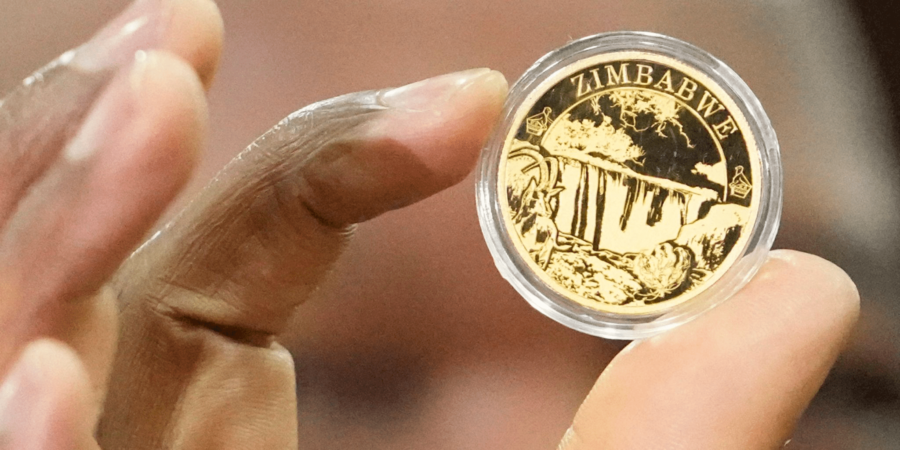What if you could hold a piece of gold in your pocket without ever having to worry about its safety? Well, In Zimbabwe, that would soon be the norm.
Zimbabwe’s Reserve Bank (RBZ) recently announced its plan to issue a gold-backed digital currency as a legal tender. It will enable people who have small amounts of Zimbabwean dollars to exchange them for digital tokens that can store value and protect against currency fluctuations.
The introduction of the digital gold tokens is part of the government’s interventions to deal with the country’s fluctuating currency and represents the first steps towards using the country’s gold reserves to peg the national currency, the Zimbabwean dollar.
According to the central bank, the US dollar currently predominates and represents roughly 70% of domestic transactions. So the idea is to give people a local currency they won’t be scared of using. Dr. John Mangudya, governor of the RBZ, tied the Zim dollar’s volatility to “the expectations of increased foreign currency supply in the market when the tobacco marketing season opened.”
However, it’s notable that Zimbabwe didn’t get here overnight. Trust in the Zimbabwean dollar has been depleting for many years. From the 1980s till 2009, Zimbabwe suffered from hyperinflation due to poor economic programmes by its government. In 2009, the government replaced the useless Zimbabwean dollar—with $1USD worth Z$2,621,984,228,675,650,147,435,579,309,984,228—with the US dollar, and inflation stalled.
By 2018, though, the government reintroduced the Zimbabwean dollar which again lost relevance quickly as more citizens hoarded US dollars, believing that the government would print more cash to shore up its budget, and make the currency worthless. Inflation surged to a staggering 255% in 2019, doubled to 558% by 2020, by another 98% in 2021, and finally jumped to 285% in 2022.
After the COVID-19 pandemic in 2020, the government permitted citizens with excess funds to use their foreign currency to make domestic purchases, which gave rise to the dual currency system. Throughout this period, the Zimbabwean dollar did not gain stability.
Then came July 2022, when the RBZ introduced Mosi-oa-Tunya gold coins to halt the devaluation of the Zimbabwean dollar and reduce demand for US dollars. Now, the bank plans to introduce gold-backed digital tokens that will act as the digital representation of the physical gold coins.
The RBZ hopes that the new digital currency will complement the Mosi-oa-Tunya coins and encourage more citizens to buy into the gold industry. The country targets a 14% increase in gold production to 40 trillion this year, having earned $377 million from gold production in the first quarter compared to $463 million a year ago, according to data provided by Fidelity Gold Refineries, the nation’s sole refinery.
But there’s a catch. Zimbabwe needs about $100 million of gold to kick-start this strategy. According to Persistence Gwanyanya, a member of the central bank’s monetary policy committee, “Any amount around or less than $100 million will be able to deal with our challenge in a big way. We expect the central bank to bring a respectable quantity that can stabilize the Zimbabwe dollar and boost demand.”
Zimbabwe has been accumulating gold reserves and acquiting precious metals since last year when it introduced a policy that compels miners to pay part of their royalties in cash and metal. Now, it will have to build this dream on what it has stashed.





